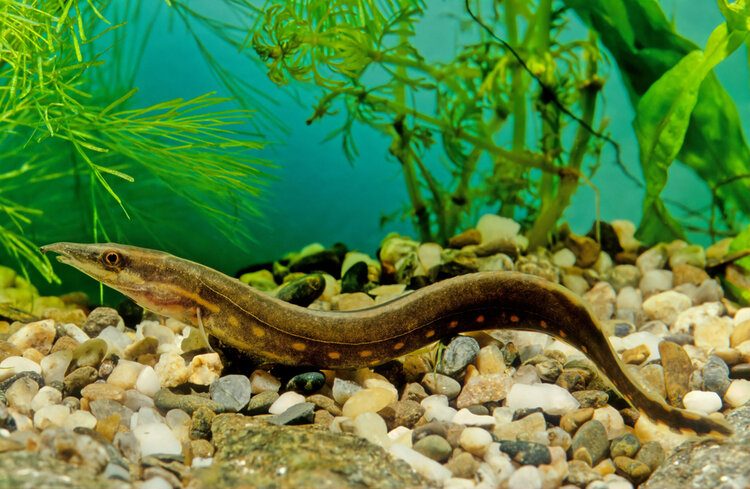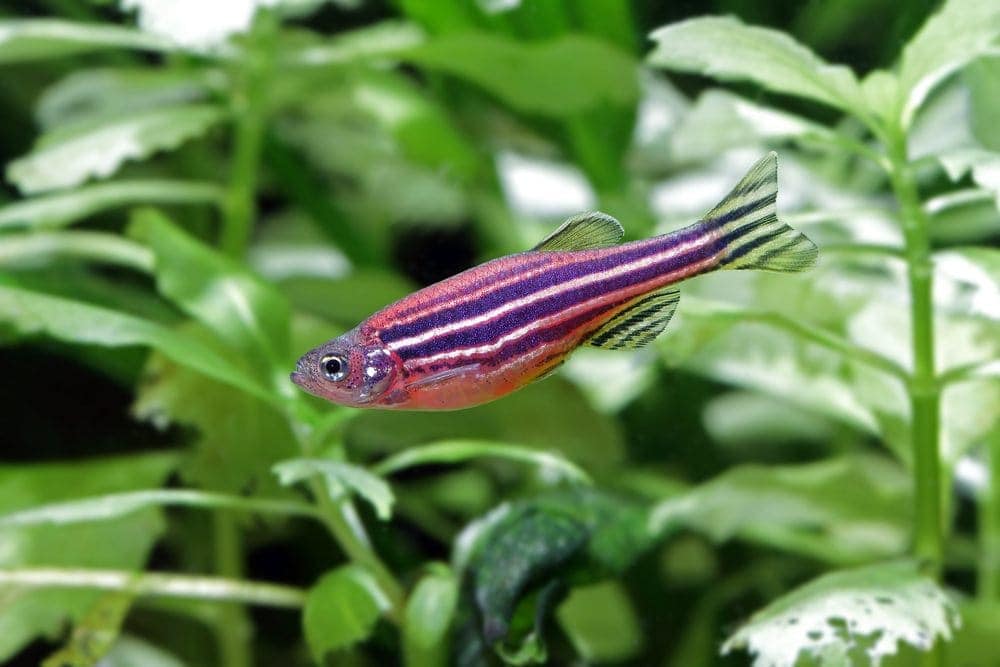10 Great Tank Mates for Ghost Shrimp: Compatibility Guide 2024

Updated on
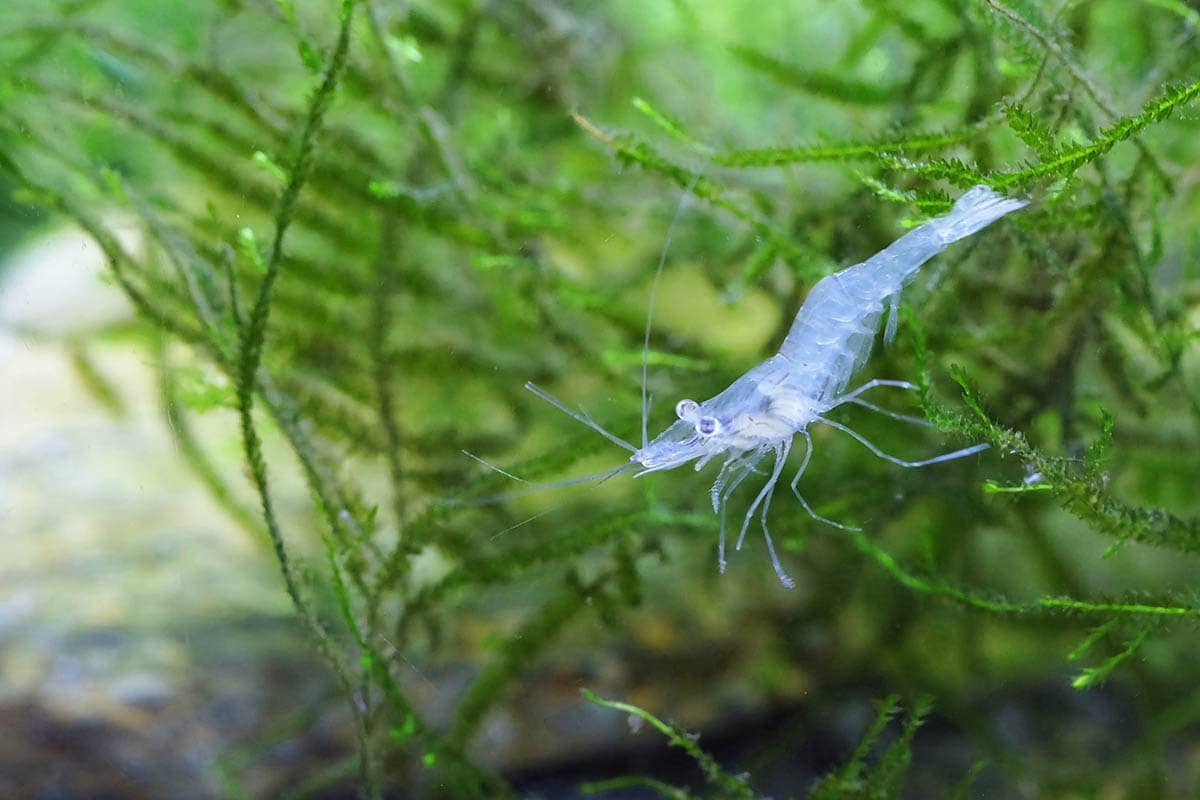
Ghost shrimp (palaemonetes paludosus) are small, clear shrimp that you’ll find in many aquariums. They have a thin, segmented body with a large carapace protecting the brain, gills, and heart. They have two pairs of antennae, one long and one short that act as sensors to help navigate the waters in your tank. The transparency of this shrimp serves as its’ defense mechanism, making it difficult for predators to spot them among the debris of the riverbed or aquarium. They are popular among aquarists because they clean up the debris of leftover fish food and algae within aquariums.
Top 10 Tank Mates for Ghost Shrimp
1. Amano Shrimp (Caridina multidentate)
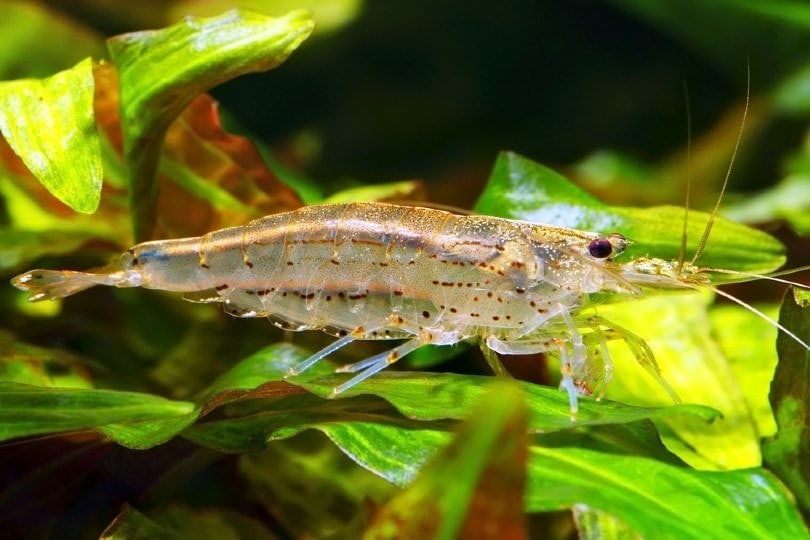
| Size: | 2 inches (5.1 cm) |
| Diet: | Omnivore |
| Minimum Tank Size: | 10 gallons (37.9 liters) |
| Care Level: | Easy |
| Temperament: | Peaceful |
Amano shrimp are freshwater shrimp that will be sure to get along with our ghost shrimp due to its’ peaceful nature. It hails from Japan and Taiwan and is known by many names, such as Japanese swamp shrimp, Japanese algae eaters, Yamato shrimp, and more. It is a “dwarf shrimp” and has a large gray or transparent body with dark-colored spots along its sides. They will eat a large amount of algae and will help to keep your tank clean.
2. Mystery Snails (Omacea bridgesii)

| Size: | 2 inches (5.1 cm) |
| Diet: | Herbivore |
| Minimum Tank Size: | 5 gallons (18.9 liters) |
| Care Level: | Easy |
| Temperament: | Peaceful |
Mystery snails are great tank mates for ghost shrimp because they are very peaceful and won’t have any aggression toward the small shrimp. They spend most of their time feeding on algae that build up on the side of your aquarium. They come in a variety of colors: black, gold, purple, and blue, and will add a pop of color to your tank.
3. Vampire Shrimp (Atya gabonensis)

| Size: | 2 to 3 inches (5.1 to 7.6 cm) |
| Diet: | Omnivore |
| Minimum Tank Size: | 15 gallons (56.8 liters) |
| Care Level: | Easy to medium |
| Temperament: | Peaceful |
The vampire shrimp is a peaceful shrimp that will get along well with your ghost shrimp. It is believed that these color-changing shrimp get their name from their nocturnal nature and the small spikes on their legs that look like fangs. The vampire shrimp is a filter feeder that uses fan-like hands to collect tasty morsels in the water currents. They will hang out in the current to eat and then move to the bottom of the tank to hide. Vampire shrimp are very shy and will be good companions for ghost shrimp as there are not likely to be any territorial issues.
4. Bloodfin Tetra (Aphyocharax anisitsi)
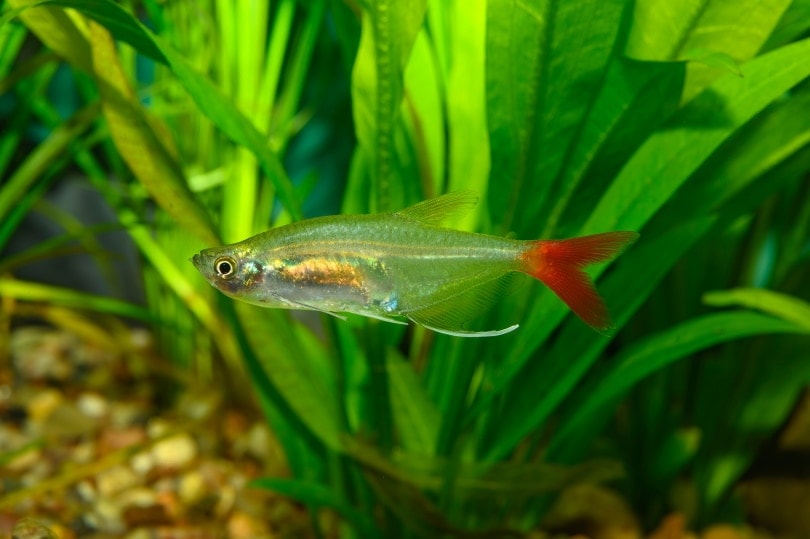
| Size: | 1.5 to 2 inches (3.8 to 5 cm) |
| Diet: | Carnivore |
| Minimum Tank Size: | 30 gallons (113.6 liters) |
| Care Level: | Easy |
| Temperament: | Peaceful |
Bloodfin tetras are peaceful fish that do well in community tanks with ghost shrimp. These fast nanos will add some color to your tank with their silver-blue bodies and orange-red tails. Bloodfin Tetras are schooling fish that swims near the middle to the top part of the tank. Ghost shrimp like to hang out at the bottom of the tank, and so the two are not likely to interact, which makes them great tank mates.
5. Zebra Danio (Danio rerio)
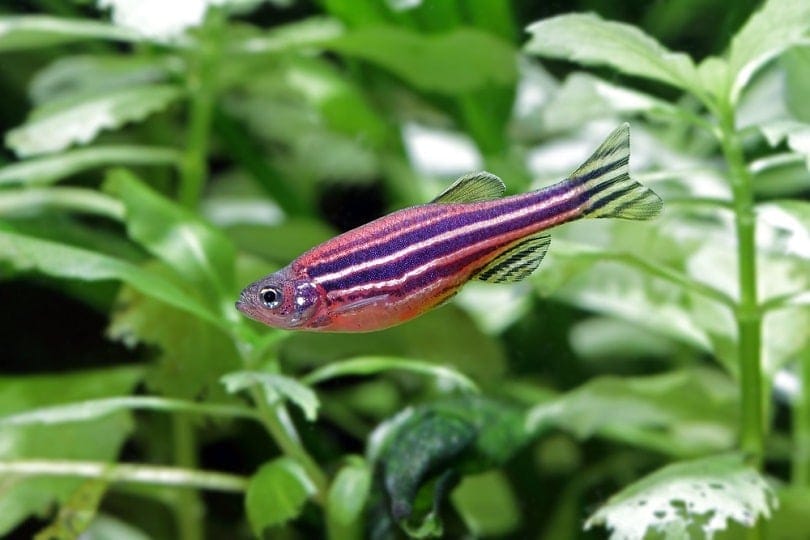
| Size: | 2 inches (5.1 cm) |
| Diet: | Omnivore |
| Minimum Tank Size: | 10 gallons (37.9 liters) |
| Care Level: | Easy |
| Temperament: | Peaceful |
Zebra danios are peaceful schooling fish known for their bright color variations. They are usually silver with blue stripes or can be golden or albino colored as well. They are popular among aquarists because danios are very social and do well in community tanks. They swim throughout all levels of the tank but will live peacefully with the ghost shrimp, making them good companion fish. Other species of danios will also do well with ghost shrimp due to the peaceful nature of this schooling fish.
6. Kuhli Loach (Pangio kuhlii)
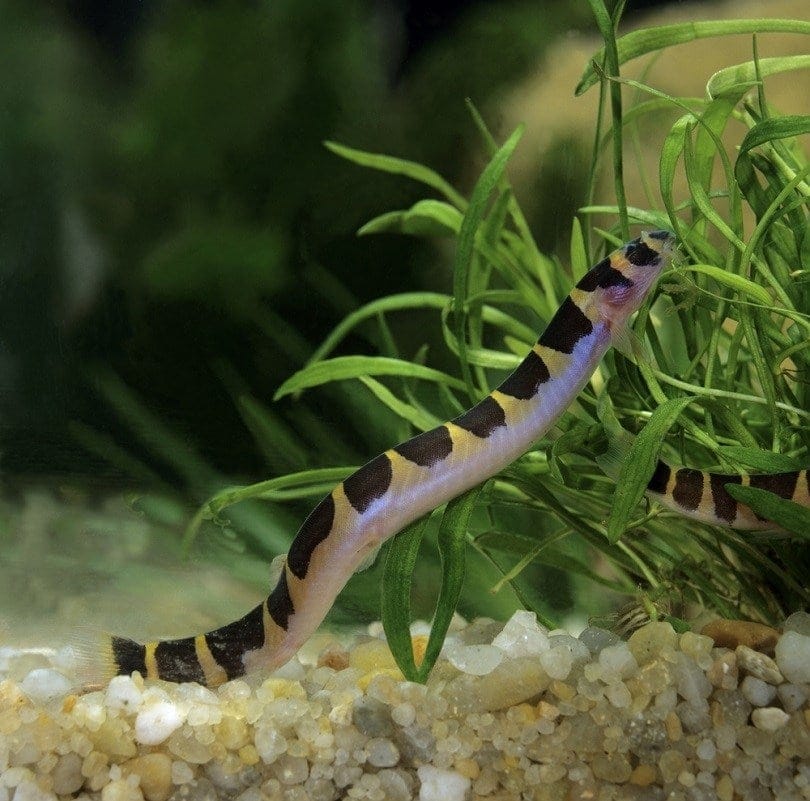
| Size: | 4 inches (10.2 cm) |
| Diet: | Omnivore |
| Minimum Tank Size: | 20 gallons (75.7 liters) |
| Care Level: | Intermediate |
| Temperament: | Peaceful, sociable |
Kuhli loaches are peaceful, scavenging fish. They look like small eels with small fins to help them swim along the bottom of the tank, where it spends their time looking for food. They are very active at night-time and will burrow into the sand of your aquarium. They will get along with ghost shrimp due to the peaceful natures of both species.
7. Cherry Barb (Puntius titteya)
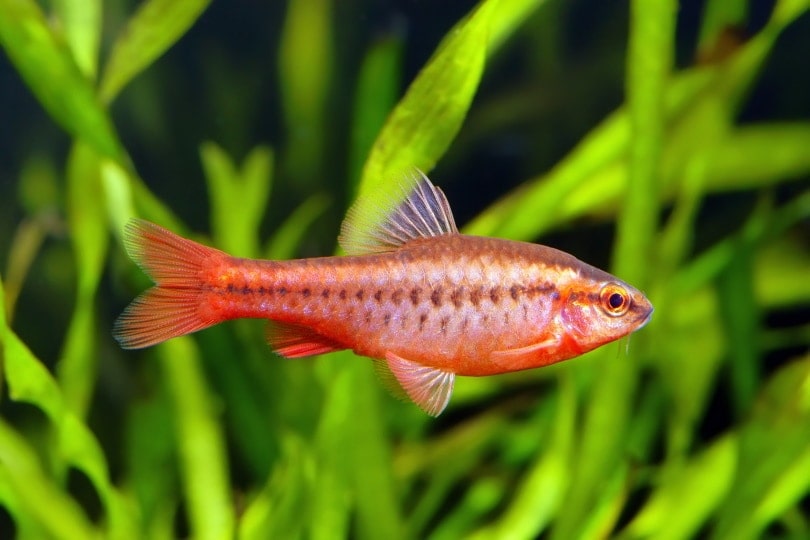
| Size: | 1 to 2 inches (2.5 to 5 cm) |
| Diet: | Omnivore |
| Minimum Tank Size: | 25 gallons (94.6 liters) |
| Care Level: | Easy |
| Temperament: | Peaceful |
Cherry barbs are peaceful schooling fish that are active swimmers in the middle of the tank. They are red with a dark band running from head to tail. They are good additions to freshwater tanks as they get along with most fish and invertebrates. Cherry Barbs are good tank mates for ghost shrimp because they are peaceful and will leave the tiny shrimp alone.
8. Bamboo Shrimp (Atyopsis moluccensis)

| Size: | 2 to 3 inches (5.1 to 7.6 cm) |
| Diet: | Omnivore |
| Minimum Tank Size: | 10 gallons (37.9 liters) |
| Care Level: | Easy |
| Temperament: | Peaceful |
Bamboo shrimp are reddish-brown shrimp that filters food from the water. They will hang out in the moderate current of your tank with specialized appendages extended to remove microorganisms, leftover fish food, or plant debris from the current. When you clean your tank, these shrimps are likely to be active to help filter out particulates in the water. They are peaceful shrimp and will get along fine with the translucent ghost shrimp.
9. Nerite Snails (Neritina natalensis)
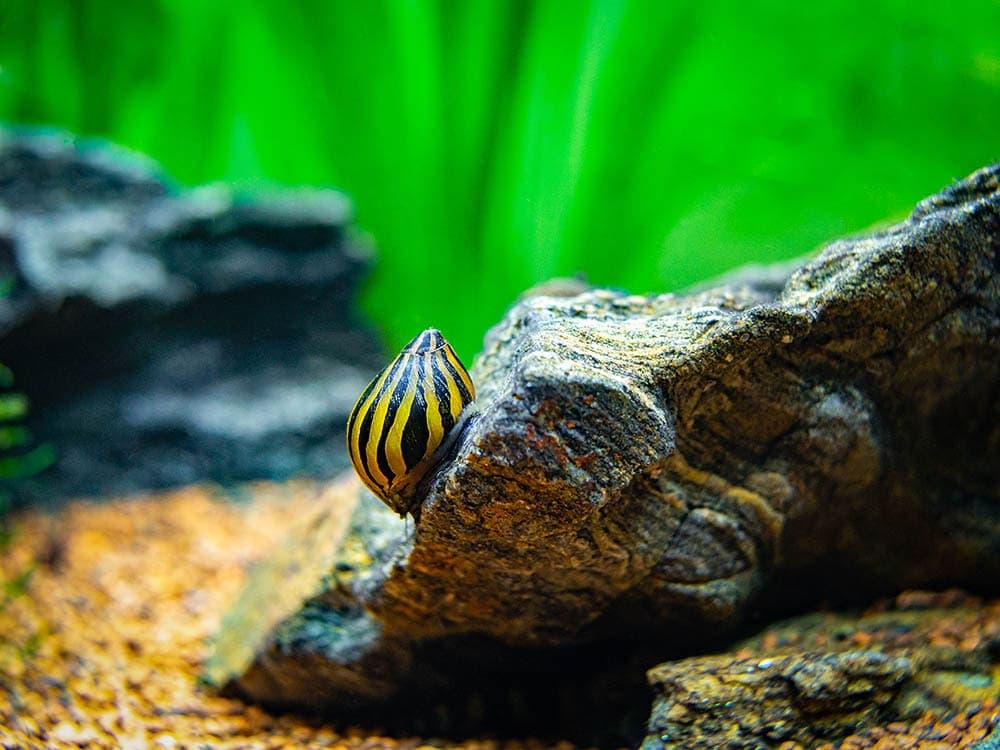
| Size: | 1 inch (2.5 cm) |
| Diet: | Herbivore |
| Minimum Tank Size: | 5 gallons (18.9 liters) |
| Care Level: | Easy |
| Temperament: | Peaceful |
Nerite snails are a popular choice for aquarists because they are great algae eaters. They are not incredibly active, but they’ll move around your tank, cleaning up any algae as they go. They do sleep, so if they are inactive for a couple of days do not be concerned. They are very peaceful and will not interfere with any of your fish or your ghost shrimp.
10. Panda Catfish (Corydoras panda)

| Size: | 1 inch (2.5 cm) |
| Diet: | Omnivore |
| Minimum Tank Size: | 10 gallons (37.9 liters) |
| Care Level: | Easy |
| Temperament: | Peaceful |
The Panda catfish is a peaceful schooling fish that spends most of its’ time in the bottom of the tank, hanging out in the substrate. It is gray with black patches, which gives the fish its name as it has the same coloring as the panda. It will venture up to the higher surfaces for food, and it becomes very energetic at feeding times. Panda catfish are not territorial and will be good tank mates for ghost shrimp. Corydoras as a species are good to incorporate into a community tank with shrimp as they are peaceful and will leave the shrimp alone.
What Makes a Good Tank Mate for Ghost Shrimp?
Ghost shrimp do well in community tanks due to their peaceful nature. To keep them calm and happy though, you will need to stock the tank with fish and shrimp with similar temperaments. Avoid aggressive fish with large mouths that are likely to eat ghost shrimp. Friendly fish that are also known to have territorial tendencies should be avoided as well. Non-aggressive fish and peaceful shrimp that are unlikely to view the ghost shrimp as prey are ideal tank mates.
Where Do Ghost Shrimp Prefer to Live in the Aquarium?
Ghost shrimp are typically bottom dwellers. They spend their time in the sediment at the bottom of your tank and may burrow, so fine gravel or sand is best for the bottom of your tank. Plants are a necessity when stocking shrimp in your tank, as the shrimp will use the plants to hide during molting. The shrimp will clean up any plant debris at the bottom of the tank, which helps to vary their diet.

Water Parameters
Ghost shrimp are native to North American freshwater rivers. They do well in tropical aquariums with temperatures ranging between 65° to 82°F (18.3° to 27.78°C). The water should be mildly hard, and the pH should be between 7.0 and 8.0. The light flow of water from the filter output will be a plus for this shrimp. Nitrite and ammonia levels should be monitored and kept at low levels (below 20ppm). Nitrate levels should be kept at about 5 to 10 ppm to keep plants healthy without causing issues for the shrimp.
Size
Ghost shrimp are typically 1.5 to 2 inches (3.81–5.08 cm) in size. Their tiny size means that you can keep 3 to 4 ghost shrimp per gallon, but that is without other species in the tank. If you decide to breed ghost shrimp, the eggs will hatch into even tinier larvae. The larvae should be able to eat algae and tiny pieces of plant debris on their own. Any flakes added to the aquarium will need to be broken down into tiny bits to feed the larvae, as they will have even smaller mouths than their parents.
Aggressive Behaviors
Ghost shrimps are not generally known for being aggressive, which is what makes them ideal for many aquariums. There are a couple of factors that may lead to some aggression issues. If the tank is overcrowded, males and females may become aggressive with each other or smaller species of shrimp. The tank temperature should be kept to 65° to 82°F (18.3° to 27.78°C). Higher temperatures outside the shrimp’s comfort range may lead to ghost shrimp attacking other shrimp. Keep the tank cool, watch for overpopulation, and make sure there are plenty of hiding spaces for shrimp to cut down on any territorial behaviors.
Top 3 Benefits of Having Aquarium Tank Mates for Ghost Shrimp
- Having fish to feed in your tank is ideal for the ghost shrimp as it will feed off the leftovers missed by the fish during feedings. The ghost shrimp will help keep your tank clean while also getting everything it needs to eat from its fishy neighbors.
- Other shrimp are likely to eat the molted exoskeleton of the ghost shrimp, which helps to keep your tank tidy.
- Biodiversity as a whole is important to community tanks, and encouraging peaceful species to live together simulates the ecology they may experience in the wild, which means they should thrive together.
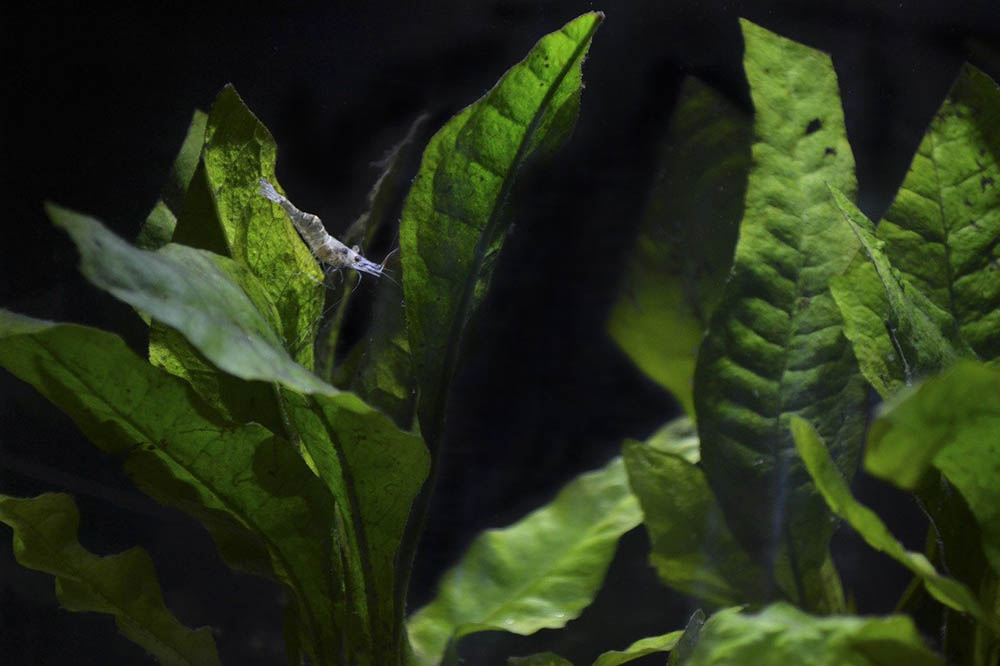
Final Thoughts
Ghost shrimp are popular among aquarists because they contribute to the overall well-being of the tank. They clean up the leftover debris from fish feedings, and they also help with algae control. Their translucent bodies help protect them from predators and make them an interesting specimen to watch in your aquarium. They are peaceful shrimp that get along well with a variety of other nonviolent fish, shrimp, and snails. Adding ghost shrimp to your community tank will increase your biodiversity and help to make your community tank a thriving and diverse ecosystem.
Featured Image Credit: Nicholas Toh, Shutterstock

